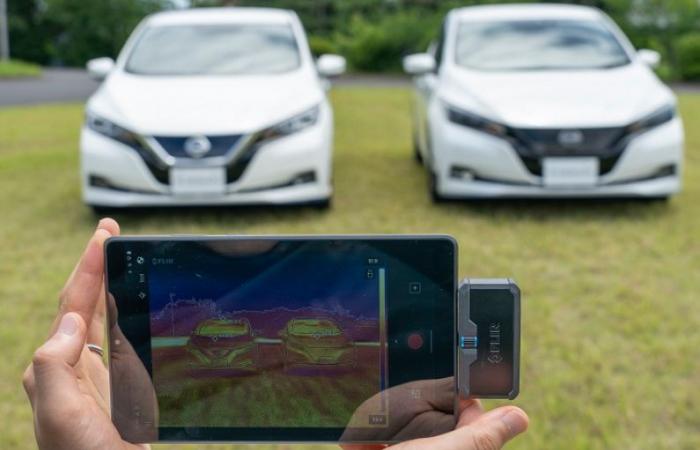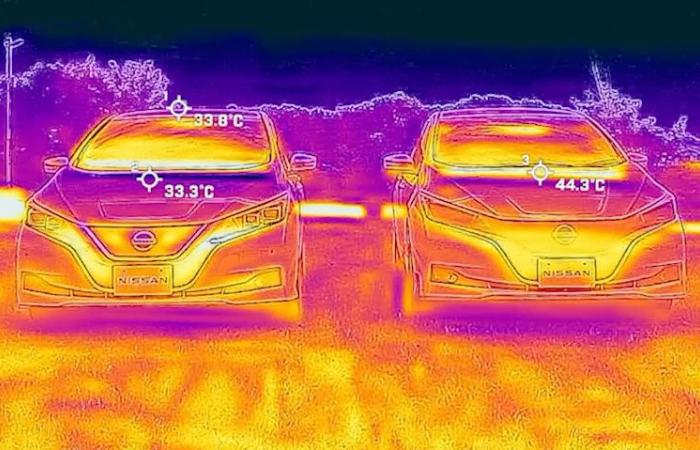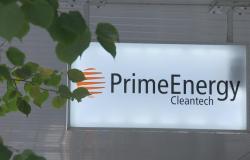We can’t stop progress, as the expression goes so well. Now a particular automobile paint has been tested by the manufacturer Nissan, which has called it its “fresh paint”.
Posted at 11:45 a.m.
Not only does this product reduce the ambient temperature of a vehicle’s cabin in summer to make it more comfortable, but as a side effect, the paint also has the advantage of reducing the energy consumption of the air conditioning system.
Developed in partnership with Radi-Cool, a Japanese specialist in cooling products, this innovative paint is composed of metamaterials. We are talking here about synthetic composite materials whose structures have properties that are not generally found in nature.
The manufacturer has been testing its new paint for several months now. Nissan in fact launched a feasibility test last November which will take place over a full year. The test takes place at Haneda Airport, Tokyo. We chose this location because it has an open tarmac, perfect for putting the paint to the test in high temperatures.
For this test, the new paint was applied to a Nissan NV100 vehicle, precisely the model used by employees at this airport.
To check the advantage of this paint, we parked two cars side by side, under the sun. The first was painted with Nissan “fresh paint”, the second with traditional paint. However, in the case of the first, we observed a drop in temperature of up to 12 degrees Celsius on the exterior surfaces of the vehicle and up to 5 degrees Celsius inside.
PHOTO TAKEN FROM THE NISSAN SITE
To check the advantage of this paint, we parked two cars side by side, under the sun. The first was painted with Nissan “fresh paint”, the second with traditional paint.
Obviously, we have observed the benefits. In the first cabin, entry into the vehicle was much more comfortable, which made it possible, as hoped, to reduce the time spent using the air conditioning in the passenger compartment.
Nissan also noted that the paint helped reduce the load on the engine. An undeniable advantage also in the case of an electric vehicle, since this time it will be possible to save the battery and gain autonomy. Quite practical.
Metamaterials, you say?
Nissan explains the performance of its paint by the fact that it contains two microstructure particles which have the advantage of reacting to light.
One of the particles reflects the sun’s rays instead of allowing them to penetrate the resin of the paint, as is the case in traditional products. The second particle is not left out. Even though it allows a real breakthrough, by generating electromagnetic waves which neutralize the sun’s rays. In fact, not only does it neutralize them, but it diverts this energy straight into the atmosphere.
This is how the particles reduce the heat transmitted to the vehicle’s surfaces, whether we think of the roof, hood, doors or panels.
Even if it is innovative in the automotive world, the radiant cooling paint offered by Nissan is not entirely new. It is already commonly used for buildings and structures.
Often, however, the product is very thick and requires the use of a roller to apply it. Therefore, we have never thought of this type of paint for vehicles, especially since it can leave a waxy and whitish residue to the touch. It does not have a transparent finish. We don’t want that.
That said, we adapted. To transpose the benefits of this type of paint to the automotive world, Nissan managed to incorporate a transparent varnish into the product and modify its texture to allow the manufacturer to apply it with a spray gun, and not with a roller. In fact, the builder had no choice but to meet his company’s exacting standards for paint quality.
With the potential of this paint thus developed, Nissan sees a bright future for its product, in particular for its application on light utility vehicles such as vans, delivery trucks and emergency vehicles, in other words all vehicles that spend most of the day on the roads.
And let’s admit that with the climate changes observed in recent years, this paint could become very useful for cooling us down. Let’s say that the potential is quite promising in the current context.
Nissan is still fine-tuning everything, but so far, the manufacturer says it is more than satisfied and prides itself on obtaining impressive results. If the trend continues, the product could well find itself on the market in a few years. This will be continued.







